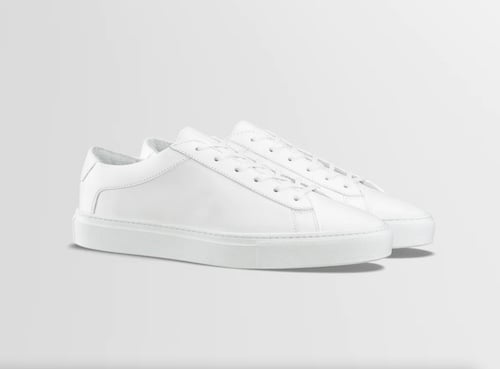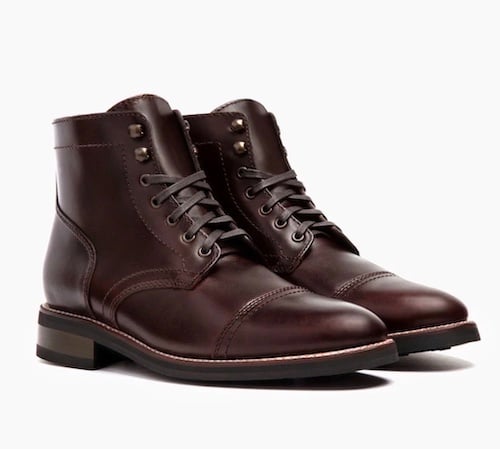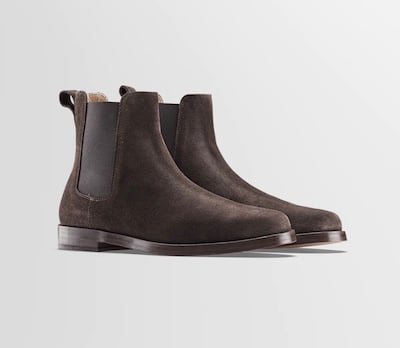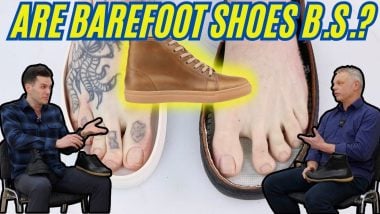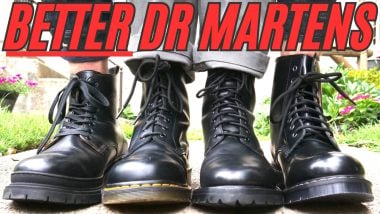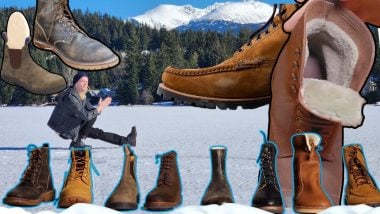Which Boots Can Be Resoled? Cemented, Blake Stitch, Goodyear Welted, & More

Expert Verified By: Trenton Potter, Cobbler & Footwear Expert
They look cool, sure, but a massive draw for guys shopping for boots is their longevity. That’s why a common question people ask when searching for the best boot brands is, “Which boots can be resoled?”
The short answer is that you can more easily resole footwear with the upper stitched to the sole, as opposed to cemented boots where the sole is glued on.
But it’s not quite that simple; there are many different ways to stitch a sole to an upper, which affects how easily a cobbler can resole a boot. We met up with expert cobblers and leather sandal makers Trenton and Heath Potter (@TrentonHeath on YouTube) to better understand the nuances between different boot constructions and their resole potential.
So, if you’re interested in putting a new sole on your high-quality boots or looking to restore your favorite pair of boots or shoes, keep reading.
Key Takeaways for Resoling Boots and Shoes:
Further Reading
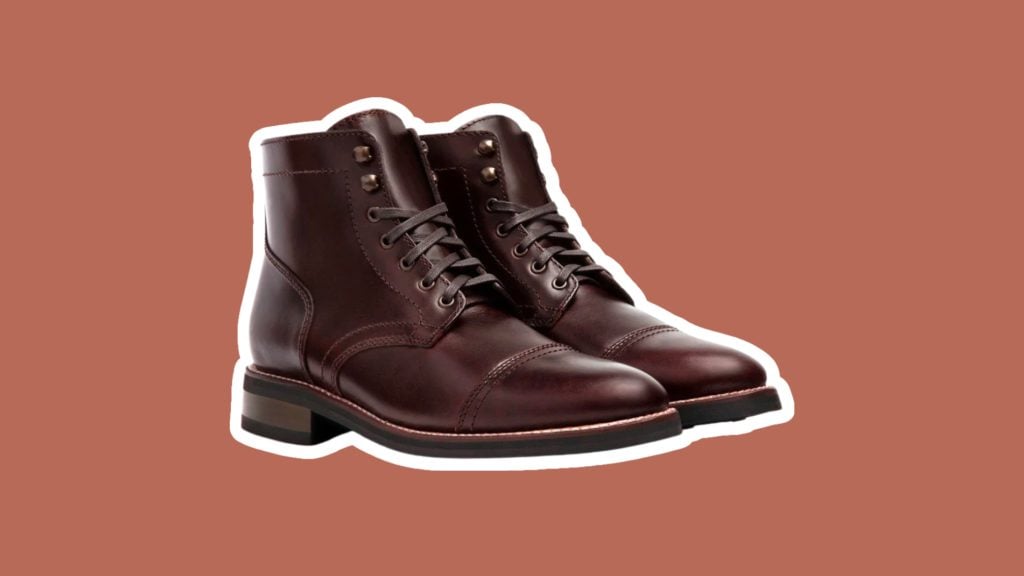
Looking for a resoleable boot? We’ve got ten quality resoleable boots that’ll work for just about everyone. Read more→
Can You Resole Cemented Boots and Shoes?
- Most sneakers, waterproof footwear, and sub-$200 work boots are cemented
- This means the upper is glued, rather than stitched, to the sole
- Don’t count on resoling these boots
Cemented soles are attached to the upper using a strong adhesive or glue. They are by far the most common boots and shoes you’ll find. They’re cheaper to make, flexible, and often way more comfortable out of the box.
If a boot is labeled as waterproof — distinct from water resistant — it’s almost certainly cemented.
But, these are typically not resoleable.
Are Hiking Boots Resoleable?
Thirty years ago, it was easy to find resoleable hiking boots. Hikers and mountaineers put up with the extra weight and long break-in of a welted boot for repairability, durability, and longevity.
That all changed when synthetic materials like EVA foam and GORE-TEX hit the market. Suddenly, every hiking boot, from casual boots for weekend warriors to technical mountaineering boots, started focusing on making lightweight waterproof boots that combined elements of sneakers. Resoleability became less important as outdoorsmen became more drawn to the idea of a fully waterproof boot.

“A lot of hiking boots or construction-like boots (with cup soles), all of that is glued on with a special machine at that shop that pushes it on there, and you just can’t buy replacement soles for them,” says Trent. “So, I generally tell folks that you can resole some cemented boots if it’s more of a flat bottom, but especially if it has a contoured (cup) sole, I would say no.”
Cobblers might be able to resole “flat bottomed” boots by splitting the sole lengthwise to remove the worn-down part, then gluing a new sole to the bottom. But it’s imprecise work and very laborious. Most cobblers won’t want to take the job.
“When you do that, you just risk that coming apart,” says Trent. “I’ve heard too many stories when a cobbler has done that and two months later the sole is coming off.”
Now, some resoleable hiking boots combine foam and GORE-TEX, like the Danner Mountain 600 Leaf GTX or Zamberlan’s boots. Danner describes their boots as “recraftable” and recommends you send them back for repair. Your average cobbler can’t.
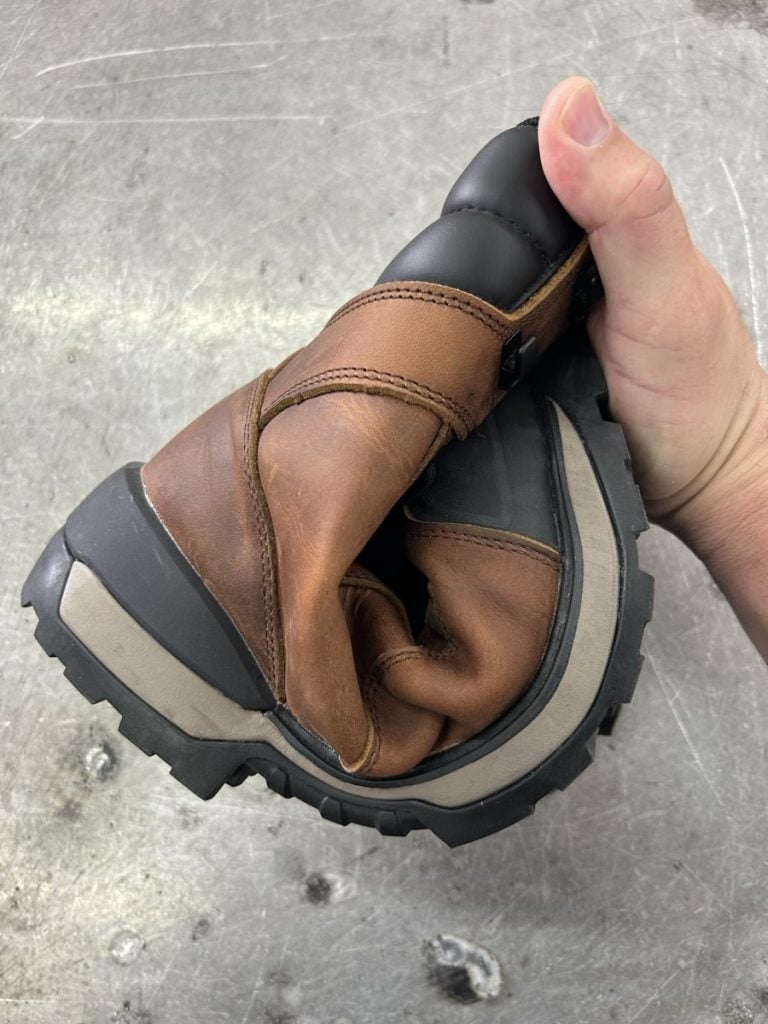
Can You Resole Work Boots?
A lot of high-quality work boots are also cemented, and much like hiking boots, it is difficult to cut off the old sole. The reason is that cemented boots are cheaper — thus more accessible to blue collar guys — and because work boots often need to be waterproof.
There are Goodyear welted work boots out there. For example, the Timberland Boondock 6″ work boot combines a three-quarter Goodyear welt with cemented heels. You’ll want to consult a cobbler to see if they can work with this build.
Also note that some work boots, like Thorogood’s Heritage Moc Toe, have a plastic or rubber Goodyear welt. Because it’s less durable than the standard leather welt, those Thorogoods are quite hard to resole, especially more than once.
Of course, higher-end Goodyear welted work boots like Red Wing Heritage, Nicks, and Whites are perfectly capable of enduring several resoles. But those boots are fairly expensive and not waterproof, limiting their appeal to the working class. (If you ask us, they’re worth saving up for — but it depends on what kind of job you need them for.)

Can You Resole Sneakers & Running Shoes?
Resoling worn-down sneakers is not recommended. They’re just about always cemented, and the uppers are just about always synthetic or cotton. That’s great for people who want lightweight, flexible, inexpensive footwear, but the upper is unlikely to survive any attempt at a resole.
Plus, you’ll wind up paying more for the resole than you did for the sneakers themselves.
The kind of luxury you can justify, these versatile, Italian-made sneakers are simply strike the best balance of durability, sustainability, and aesthetics.
What About Leather Sneakers?
Leather sneakers withstand more abuse than cheaper ones. I’ve tried a ton of brands like Koio, Thursday, and Common Projects. They’re a great middle ground that combines the fun of a youthful sneaker with high-quality Italian leathers to add a more grown-up, put-together edge to a casual look.
Further Reading
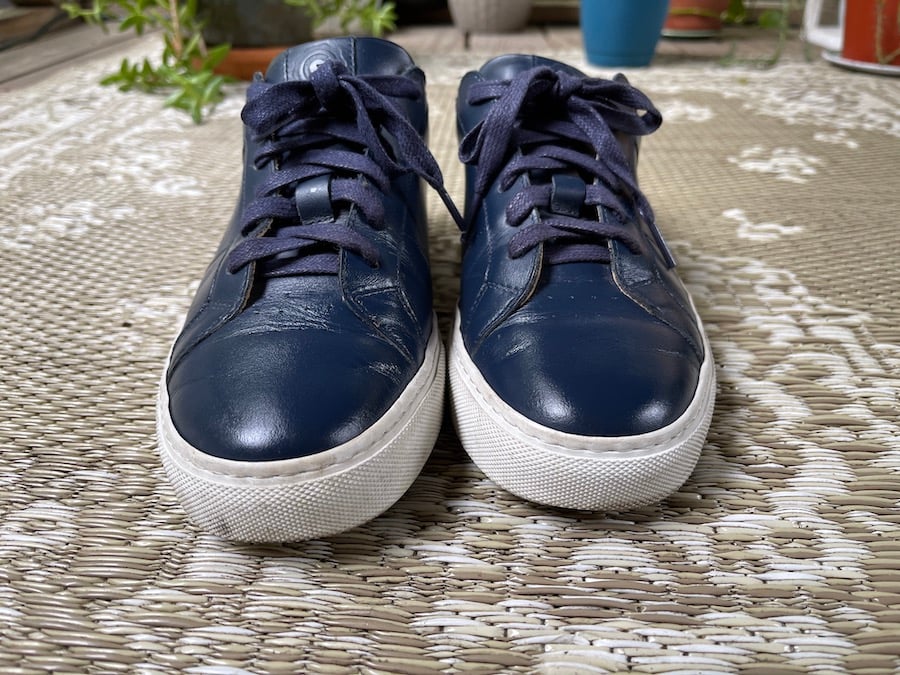
The 10 Best Leather Sneakers for Men
From minimalist to dressy, we’ve got something for your style.
These higher end sneaker brands stitch and glue on the sole. The stitching might make you think they’re easy to resole, but the benefit is actually that it makes the sole less likely to peel off. That’s worth it, but it doesn’t mean they can be easily resoled.
“A lot of those can be resoled,” says Trent. “Not every cobbler resoles it, because you do have to find the (original sole) to be able to resole those, so it’s not something that we deal with. But I know there are cobblers throughout the US who focus on sneakers and can do it.”
Once again, just because somebody somewhere will take the time to resole a sneaker most people can’t… that doesn’t mean you should buy the shoe with the expectation that you can resole it. Most cobblers will decline the job and the highly specialized operation will likely cost almost as much as a new pair.
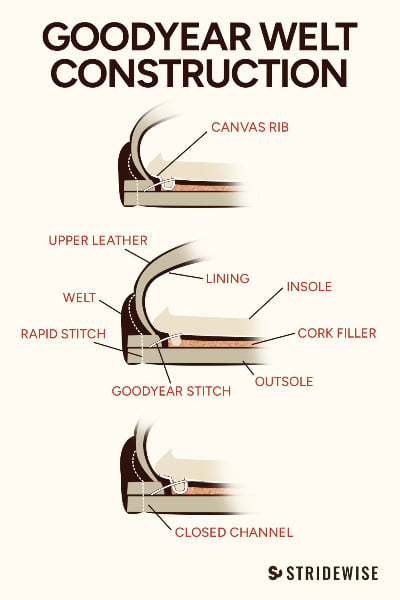
Can You Resole Goodyear Welted Boots?
- The kind of boot that’s easiest to resole
- Any cobbler can take on this job
“Goodyear welted boots are tried and true,” says Heath. “It’s the gold standard for resoleable shoes and boots.”
Goodyear welt construction is the gold standard for durable boots. In the late 19th century, the Goodyear welting machine replaced the more laborious hand welting. The Goodyear welt doesn’t directly attach to the leather upper. A strip of material (usually leather) sandwiched between the sole and uppers connects everything together.
These are easy to resole because the cobbler can remove the stitches from the welt and attach a new sole. You can see the entire process below, where we visit Trenton and Heath to recraft an old pair of Red Wing moc toe boots.
My Goodyear Welt Pick
A comfortable, durable, and versatile cap toe boot handcrafted with quality leather from US hides and featuring Goodyear welt construction. The Captain is built to last — and match with anything.
(Even) if you wear the welt out with many resoles, a shoe cobbler can just put another welt back on, and now you’re starting fresh.
Trent Potter
The important thing is to maintain the leather upper of the boot with regular cleaning and conditioning. This keeps the leather from becoming too brittle or degraded. If you do that, Goodyear welt boots can last “for a decade or more.”
Just remember: you can technically make a Goodyear welted boot with a plastic or rubber welt instead of leather. These are unlikely to make it through more than one resole (if that), so make sure you’re getting a leather welt if your priority is the ability to resole.
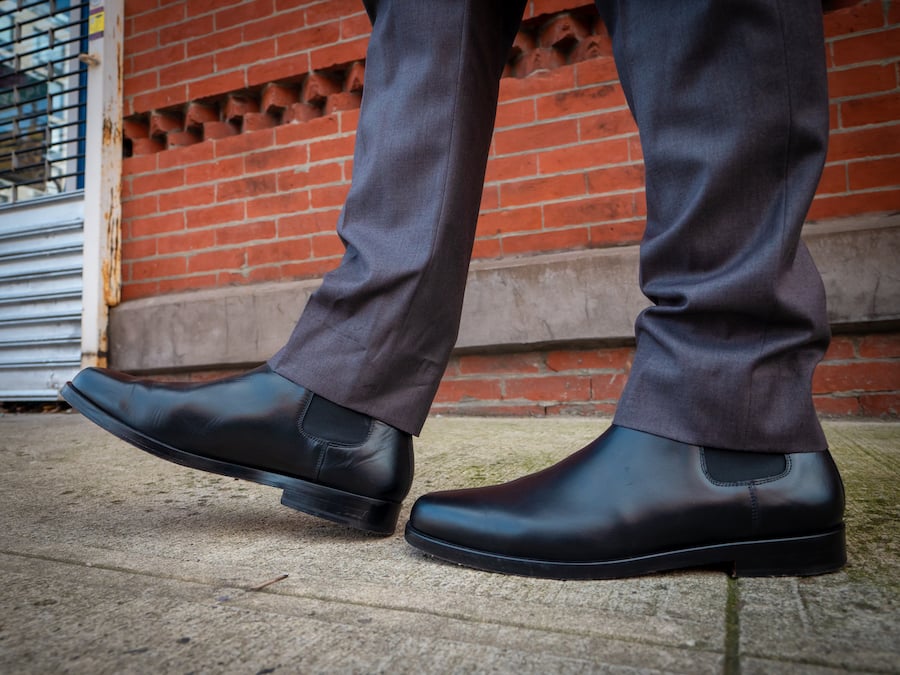
Are Blake Stitch Boots Resoleable?
- You can resole Blake stitched boots, though not every cobbler has the machinery — phone ahead!
- Usually limited to about 3 resoles
- Lighter and more flexible than Goodyear welts, and also cheaper to make
With Blake stitch construction, the boot’s upper is sewn directly to the sole. This method produces a lightweight and flexible boot, and it doesn’t produce the “shelf” of stitching that runs round the perimeter of the boot that you see on Goodyear welted footwear. (Sometimes Blake stitched boots will put stitching there anyway, but it’s fake.)
Blake stitches are more common on dressier boots or shoes because it’s a sleeker look.
I used to think these were hard to resole, but that isn’t exactly the case.
“The upper is pulled up underneath, glued down, sanded down to smoothness, you stick on a sole, and you stitch it,” Heath explains. “Needle stitching goes all the way through the shoe into the insole, so you’re standing on the stitches.”
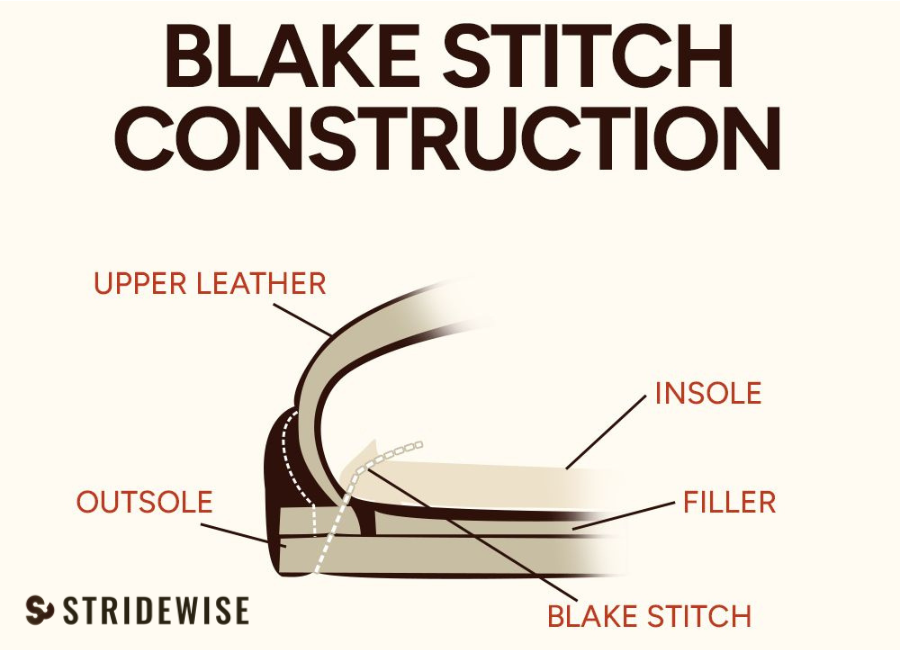
Blake Stitched boots can be resoled, but not every cobbler has the machinery. Phone ahead to make sure.
“It can be resoled. The only thing with Blake stitched shoes is you can only resole it a limited number of times,” adds Trent. “Because every time you stitch it, it comes up through the insole and it’s poking a hole. It’s almost impossible to restitch it in those exact holes, so after a while it becomes like Swiss cheese. Once you get too many stitch holes in it, the insole’s kind of shot. But generally, you can resole them three or four times.”
The durability of a Blake stitch boot also depends on the materials used. Boots with vegetable-tanned leather insoles are more durable than those with fiberboard insoles.
My Blake Stitch Pick
With a flexible, lightweight construction that remains water resistant and resoleable, this sleek Chelsea hits all the right notes in a range of leathers for different situations.
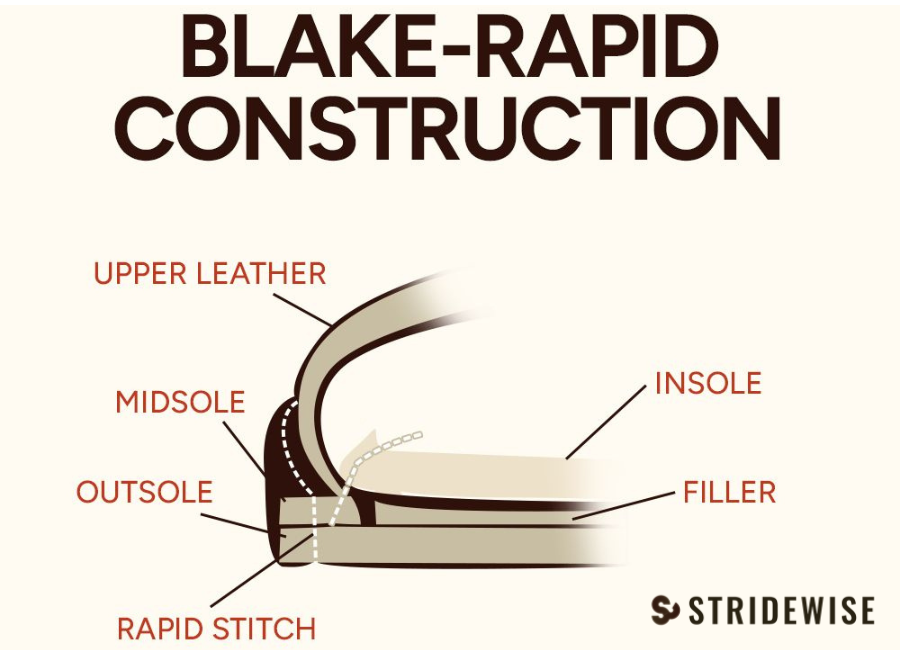
Can You Resole Blake Rapid Boots?
- Blake Rapid footwear can be resoled
- This is a very rare construction method, though
Blake rapid is a hybrid between Goodyear welt and Blake Stitch.
“You will have a midsole or the insole itself that will be stitched to the upper via the insole,” says Trent. “Then you can use the midsole that sticks out the side to serve almost as a welt, and then you stitch on an outsole to that.”
With Blake rapid construction, the bootmaker attaches the sole and uppers to the midsole. There is no ‘Goodyear welt” instead the midsole holds everything together. Unlike a Blake stitch, a cobbler can resole these multiple times.
“So, when you resole it you’re just cutting the stitches on the outside, pulling it off, and never touching the stitches from the midsole,” says Heath. “So you’re not punching holes into the inside of the shoe.”
“Another advantage of Blake rapid in resoling is they just have a little wall that hugs up against the upper,” he says, “enhancing the boot’s ability to repel water and prevent dirt from the ground from getting onto the stitches, thereby potentially improving its longevity.”
We describe Blake rapid as more water resistant and lightweight than a Blake stitch, but lighter than a Goodyear welt. You don’t get the cork filling that many like in a Goodyear welted boot, but we’re getting off topic.
The point is that you can resole Blake rapid boots
My Blake Rapid Pick
A versatile boot made with rare Blake Rapid construction that's lighter than a work boot but more water resistant than a dress boot. Get $15 off with the code "STRIDEWISE" at checkout.
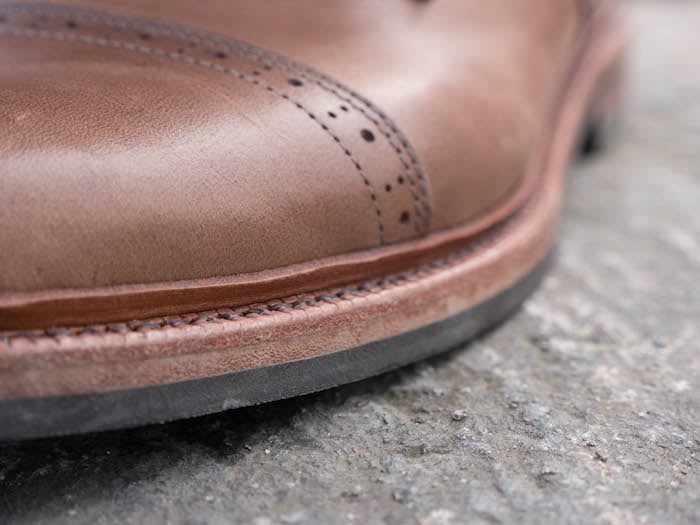
Variations of the Goodyear Welt
There are many variations of Goodyear welts, like storm welts and split reverse welts.
Storm welts and split reverse welts are more water resistant and often used for hiking and work boots. In these variations, the welt curls up onto the upper, making an extra water resistant barrier.
Can You Resole Handwelted Boots?
Hand welting is the predecessor of Goodyear welting. It’s more labor intensive and expensive, but it appeals to traditionalists in the boot space.
“It’s stitched on by hand,” Heath says. “They are the same kind of basic idea behind a Goodyear welt, but with the stitching done by hand, making the process more labor-intensive.”
It’s also a strong sign that the bootmaker knows what they’re doing and that you’re getting high-quality boots. Some of the most sought-after, rare, and expensive boots are hand-welted. We’re talking about expensive Japanese brands that are tough to get state-side, stunning Indonesian boots, and classic American brands like White’s.
My Handwelted Pick
Hand welted and crafted out of vegetable tanned leather from the famed Badalassi Carlo tannery, this boot is the boot to get for an elevated take on a cult classic.

Can You Resole Stitchdown Construction?
- Often laborious and more common in high end footwear
- Can be resoled a few times, though not every cobbler can do it
With stitchdown boots, the uppers are folded and stitched directly to the sole.
“You can resole a stitchdown,” says Trent. “The hard part about a stitchdown is the leather of the upper. When you remove that sole, the upper has a tendency to pop out. So you have to be careful to maintain the shape of that boot.”
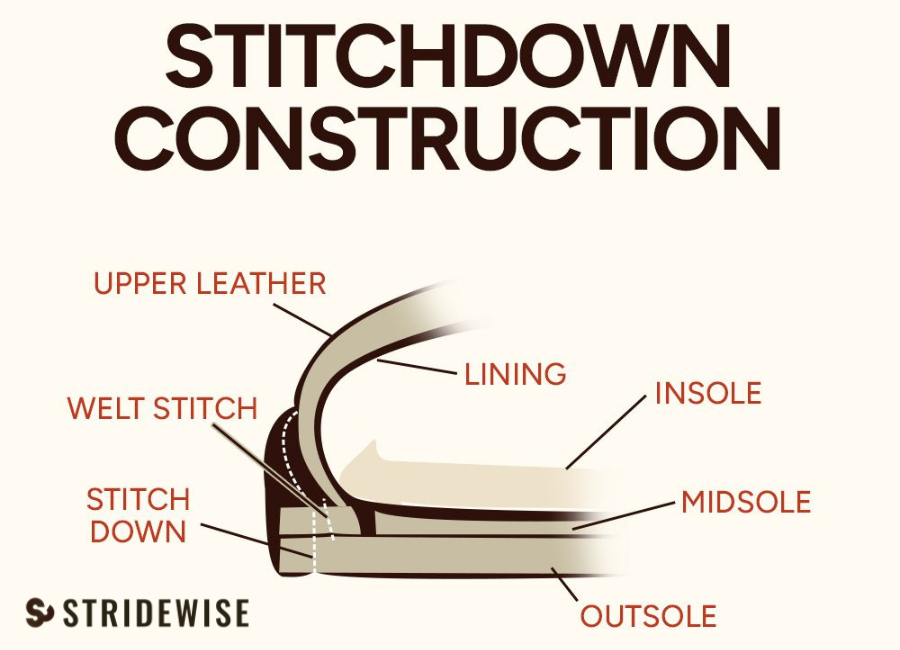
While it is possible to resole stitchdown boots, it’s not necessarily easy.
“You have to be careful not to take away too much from the leather right here.” Trent explains, “And when you’re stitching, you have to make sure you’re missing the holes from the previous resole.”
Expensive brands with very high quality uppers and craftsmanship, like Viberg, use stitchdown construction. While it’s hard to get more than a few resoles out of a stitchdown boot, very few people ever need more than that anyway.
“These are usually the type of shoes that are going to last you a lifetime.” Heath says. “Most of them have really thick rubber soles, so you’re not going to burn through those rubber soles nearly as quickly.”
Resoling stitchdown boots is definitely possible, albeit with specific challenges. Phone ahead to make sure your cobbler can do it, and accept that there’s a decent chance you’ll need to mail them to the right cobbler.
My Stitchdown Pick
Viberg is synonymous with impeccable quality, high end leathers, laborious handwork, and versatile silhouettees, with their iconic Service Boot defining their brand.
Looking for a resoleable boot? I’ve got seven great picks for resoleable boots in the YouTube video below. And don’t forget to sign up for more great boot content!
Conclusion: Which Boots Can Be Resoled?
There’s more to maintaining boots than just buying new laces. Before you buy a new pair of boots, read the product description and find out how the boot’s construction. This is a key part of knowing how long they’ll last and, by extension, how worthwhile your purchase is.
From cemented to stitchdown, each method offers varying degrees of longevity. This article has outlined the pros and cons of each so you can decide if any tradeoffs are worth it.
High-quality boots with resoleable constructions can ensure long-term wear and value for your purchase. Remember, the key is not just in the sole but also in maintaining the uppers and overall structure of the boot.
Can you resole rubber soles?
Yes, you can resole rubber soles for welted boots.
Can you resole work boots?
You can resole work boots if they are welted. But a lot of work boots are cemented and made of specialized materials. It's best to consult an experienced cobbler.

